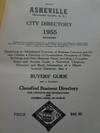![Organizatsiya uborki urozhaia [i.e. The Organization of the Harvesting]](https://d3525k1ryd2155.cloudfront.net/h/324/855/1494855324.0.m.jpg)
Organizatsiya uborki urozhaia [i.e. The Organization of the Harvesting]
by Gavrilov, L.G
- Used
- Condition
- See description
- Seller
-
Tbilisi, Georgia
Payment Methods Accepted
About This Item
Moscow: Selkolkhozgiz, 1931. 142 pp. 22,2x14,7 cm. Original illustrated wrappers. Fine condition.
The architecture of the book by "Brigade #1 For Mass Book Production".
No copies in Worldcat.
The polygraphic masterpiece by the unsung hero of Soviet book constructivism, Elbrus Gutnov (1906-1981), and his "Brigade #1 For Mass Book Production".
The self-taught Ossetia artist, he was always in the shadow of Solomon Telingator, but he was indeed one of the most consistent practitioners of the ideas of polygraphic constructivism established by Alexei Gan and El Lissitskiy.
As a young man Vladikavkaz, where he was painting for the local Red Army unit, Gutnov was noticed by Sergo Ordzhenikidze. Under Sergo's protection, and with the approval of Stalin and Lunacharsky, Gutnov traveled to Germany to study.
He enrolled in the United State Schools for Free and Applied Arts (Vereinigte Staatsschulen für freie und angewandte Kunst) in Berlin, where he studied in the polygraphic department. According to his wife, he participated in the classes of Oskar Kokoshka and Emil Orlik.
His brother, Evgeniy Gutnov, also a polygraphist, met him in Berlin: he was a revolutionary who had escaped Russian imprisonment in 1916 and made his way to Germany where he was printing Russian social democratic books and books in Ossetian.
Elbrus Gutnov embraced the German polygraphic culture of the time. Allegedly he participated as a typesetter in the printing of Mayakovsky's "For the Voice" in 1923, which was printed in Berlin.
Gutnov returned to the USSR in 1928 to play an active part in the late flourishing of the leftist ideas in the country. He became a member of the "Oktyabr" (October) group, and met his heroes Eisenstein and Mayakovsky.
At that time he was working with Solomon Telingator, creating some of the most striking wrappers for the periodical "Poligraficheskoe proizvodstvo" [i.e. Polygraphic Production].
But the biggest project in Gutnov's life became the "Brigade #1 For Mass Book Production", a group consisting of himself, Galina Gladysheva and Zinoviy Amusiev. Gutnov set his goal of making a book fit for the masses: to use all the polygraphic principles of constructivism and apply them to books read by the workers, peasants and often less-educated members of Soviet society. With the use of typefaces, diagrams, two-color printing, illustrations on different parts of the page, and photomontage, the Brigade #1 created a printed product very different from other books, in the usual sense of the term. Their ideas echoed with those of Telingator, who famously stated that the book designer should be an 'architect' of the book. Gutnov's vision was different, however, because his was in no way the solo project, hence the epithet "brigade". Often, indeed, he did not proclaim his own name in print.
In this particular book, as well as the usual members of the brigade, the following people participated: P. Romanov, S. Kuzmin, V. Danilov, L. Pronkov, N. Prokhorov, G. Zakharov, S. Trofimov, and N. Valetov.
If book artist was a book "architect" according to Telingator, for Gutnov that "architect" needed also a book "engineer", a "book plumber", a "book electrician", a "book decorator" to complete the work.
In order to achieve the goal of creating the book for the masses, collective effort was required.
In this book the result speaks for itself: it combines the best of letterpress design, photomontage, and the visual contrasts of constructivism. Gutnov & Co created something unique that was completely different from any photobook of the time.
The full list of books designed by the Brigade is unknown, largely owing to their rarity. For example, this book was printed in a run of 130,000 copies, but because it was intended for the kolkhoz workers, the chance of it enduring was not great and, as a result, it does not feature in any of the bibliographies on photomontage.
However, it is stated on the last page that the print-run of 130 000 was supplemented by a further 250 copies suggesting a special printing which this copy is likely to represent. However, as we were unable to locate any other copies of this book (from any part of the print-run), it is impossible to be certain about this.
The architecture of the book by "Brigade #1 For Mass Book Production".
No copies in Worldcat.
The polygraphic masterpiece by the unsung hero of Soviet book constructivism, Elbrus Gutnov (1906-1981), and his "Brigade #1 For Mass Book Production".
The self-taught Ossetia artist, he was always in the shadow of Solomon Telingator, but he was indeed one of the most consistent practitioners of the ideas of polygraphic constructivism established by Alexei Gan and El Lissitskiy.
As a young man Vladikavkaz, where he was painting for the local Red Army unit, Gutnov was noticed by Sergo Ordzhenikidze. Under Sergo's protection, and with the approval of Stalin and Lunacharsky, Gutnov traveled to Germany to study.
He enrolled in the United State Schools for Free and Applied Arts (Vereinigte Staatsschulen für freie und angewandte Kunst) in Berlin, where he studied in the polygraphic department. According to his wife, he participated in the classes of Oskar Kokoshka and Emil Orlik.
His brother, Evgeniy Gutnov, also a polygraphist, met him in Berlin: he was a revolutionary who had escaped Russian imprisonment in 1916 and made his way to Germany where he was printing Russian social democratic books and books in Ossetian.
Elbrus Gutnov embraced the German polygraphic culture of the time. Allegedly he participated as a typesetter in the printing of Mayakovsky's "For the Voice" in 1923, which was printed in Berlin.
Gutnov returned to the USSR in 1928 to play an active part in the late flourishing of the leftist ideas in the country. He became a member of the "Oktyabr" (October) group, and met his heroes Eisenstein and Mayakovsky.
At that time he was working with Solomon Telingator, creating some of the most striking wrappers for the periodical "Poligraficheskoe proizvodstvo" [i.e. Polygraphic Production].
But the biggest project in Gutnov's life became the "Brigade #1 For Mass Book Production", a group consisting of himself, Galina Gladysheva and Zinoviy Amusiev. Gutnov set his goal of making a book fit for the masses: to use all the polygraphic principles of constructivism and apply them to books read by the workers, peasants and often less-educated members of Soviet society. With the use of typefaces, diagrams, two-color printing, illustrations on different parts of the page, and photomontage, the Brigade #1 created a printed product very different from other books, in the usual sense of the term. Their ideas echoed with those of Telingator, who famously stated that the book designer should be an 'architect' of the book. Gutnov's vision was different, however, because his was in no way the solo project, hence the epithet "brigade". Often, indeed, he did not proclaim his own name in print.
In this particular book, as well as the usual members of the brigade, the following people participated: P. Romanov, S. Kuzmin, V. Danilov, L. Pronkov, N. Prokhorov, G. Zakharov, S. Trofimov, and N. Valetov.
If book artist was a book "architect" according to Telingator, for Gutnov that "architect" needed also a book "engineer", a "book plumber", a "book electrician", a "book decorator" to complete the work.
In order to achieve the goal of creating the book for the masses, collective effort was required.
In this book the result speaks for itself: it combines the best of letterpress design, photomontage, and the visual contrasts of constructivism. Gutnov & Co created something unique that was completely different from any photobook of the time.
The full list of books designed by the Brigade is unknown, largely owing to their rarity. For example, this book was printed in a run of 130,000 copies, but because it was intended for the kolkhoz workers, the chance of it enduring was not great and, as a result, it does not feature in any of the bibliographies on photomontage.
However, it is stated on the last page that the print-run of 130 000 was supplemented by a further 250 copies suggesting a special printing which this copy is likely to represent. However, as we were unable to locate any other copies of this book (from any part of the print-run), it is impossible to be certain about this.
Reviews
(Log in or Create an Account first!)
Details
Terms of Sale
Bookvica
All items are subject to prior sale. All prices are net. Postage, packing, insurance and applicable sales taxes are extra.
About the Seller
Bookvica
Biblio member since 2016
Tbilisi
About Bookvica
Bookvica is an antiquarian bookseller specializing in fine books related to Russia and former USSR. We represent the wide variety of subjects: from 16th century Old Slavonic books to Soviet Samizdat. Among our primary interests are first editions of Russian classics, important travels and voyages, Avant-garde and Constructivism, translations of world classics into different ex-USSR languages, children's books, science and economics, music, Russian Americana, autographs and manuscripts. Our goal is to cover all of the aspects of Russian culture reflected in significant books from 1560s to 1990s.We participate in international book fairs as members of the International League of Antiquarian Booksellers and The Guild of Antiqurian Booksellers of Russia. As the members of these organisations we obey their Codes of Ethics.
Glossary
Some terminology that may be used in this description includes:
- Fine
- A book in fine condition exhibits no flaws. A fine condition book closely approaches As New condition, but may lack the...
- Wrappers
- The paper covering on the outside of a paperback. Also see the entry for pictorial wraps, color illustrated coverings for...
- G
- Good describes the average used and worn book that has all pages or leaves present. Any defects must be noted. (as defined by AB...
- Worldcat
- Worldcat is a collaborative effort produced by OCLC (Online Computer Library Center) and supported and used by 72,000 libraries...
![Organizatsiya uborki urozhaia [i.e. The Organization of the Harvesting]](https://d3525k1ryd2155.cloudfront.net/h/324/855/1494855324.0.s.jpg)


